




| Scarlet Ibis (Eudocimus ruber (Linnaeus, 1758)) |





|
|
Scientific name: Eudocimus ruber (Linnaeus, 1758) Common name: Scarlet Ibis Other names: Scarlet Ibis (for the Eudocimus ruber ruber sub-species) and American white Ibis (for the Eudocimus ruber albus sub-species). French name: Ibis rouge Order: Pelecaniformes Family: Threskiornithidae Size: Body size: 61 cm; Weight: 772 to 935 g; Wingspan: 101 cm. Habitat: Coastal marshes, estuaries, mangroves. Food: Scarlet Ibis probe for food in the mud and in shallow water with their curved bill. They catch shrimps, small crabs, aquatic insects, larvae, molluscs, amphibians and small fishes. Nesting: Scarlet Ibis nest in colonies on trees. There are generally 3 to 5 eggs per clutch. Migration: No migration except some low distance flights to move from one damp place to another one. Geographic area: The Eudocimus ruber ruber sub-species is found along the Atlantic coasts of the northern part of South America, Venezuela, Guyana, Suriname, French Guiana, north of Brazil. It is also found on the Caribbean islands close to South America, including Trinidad and Tobago. There is an isolated colony in south-eastern Brazil, at Santos-Cubatão. The Eudocimus ruber albus sub-species is found in the south of the United-States, in Central America, in Cuba, in Venezuela and in Colombia. |
Eudocimus ruber is found in two sub-species forms though some consider that these are two different species. As on all Ibis species, the bill is long and down-curved. Eudocimus ruber ruber is characterized by its beautiful bright red colour coming from pigments found in its food. The tip of the wings is black. Immature birds show a white underside. The head and the upper side are brown. They progressively get red patches and will only show their final adult plumage at two years old. Eudocimus ruber albus is white with black wing tips. |
| [To know more about the Scarlet Ibis] [Next picture] [Top] |
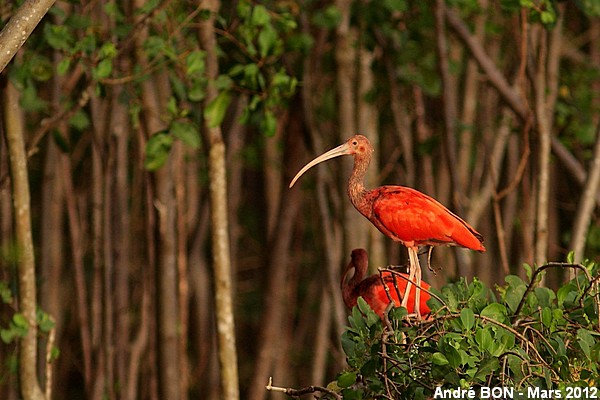
|
I have shot this picture at the old harbour of Cayenne. Scarlet Ibis come here in the evening to spend the night perched in the mangrove. They were perched a little too far and all the pictures displayed here are crops. |
| [To know more about the Scarlet Ibis] [Next picture] [Previous picture] [Top] |
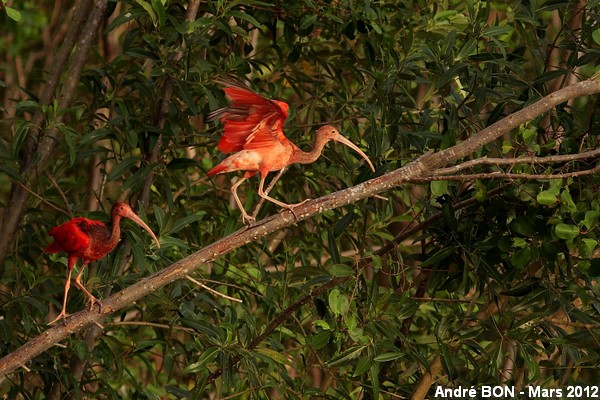
|
Looking for the better place to spend the night. |
| [To know more about the Scarlet Ibis] [Next picture] [Previous picture] [Top] |
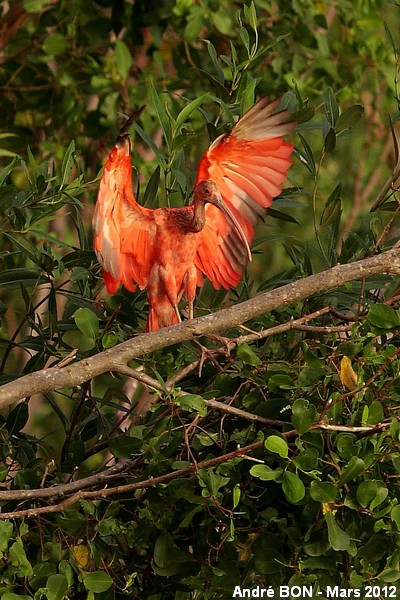
|
Arrival on the perch. |
| [To know more about the Scarlet Ibis] [Next picture] [Previous picture] [Top] |
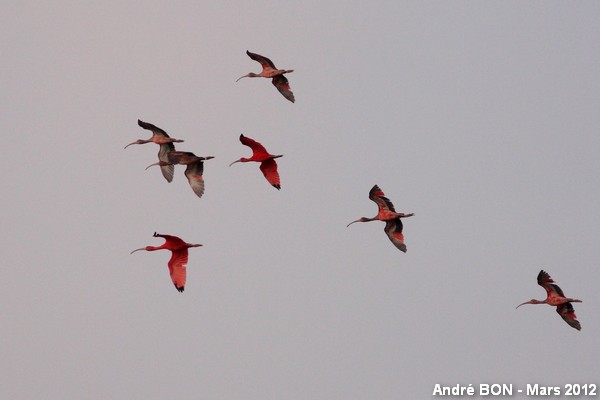
|
The old harbour of Cayenne is also a good place to observe flocks of Ibis in flight. They are going to perch on the mangrove but a little further. |
| [To know more about the Scarlet Ibis] [Previous picture] [Top] |
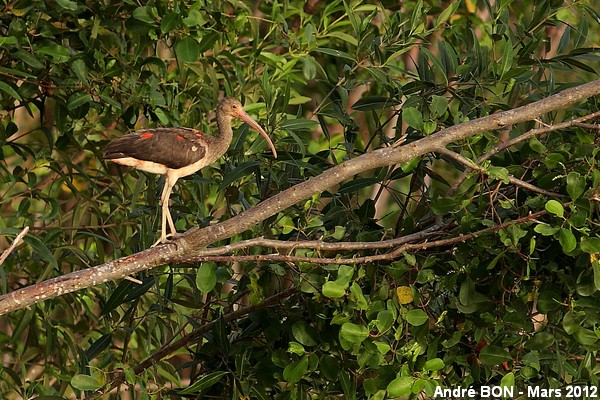
|
Here is an immature Scarlet Ibis with its brown upper side, its white underside and some red spots that prefigure its adult plumage. |